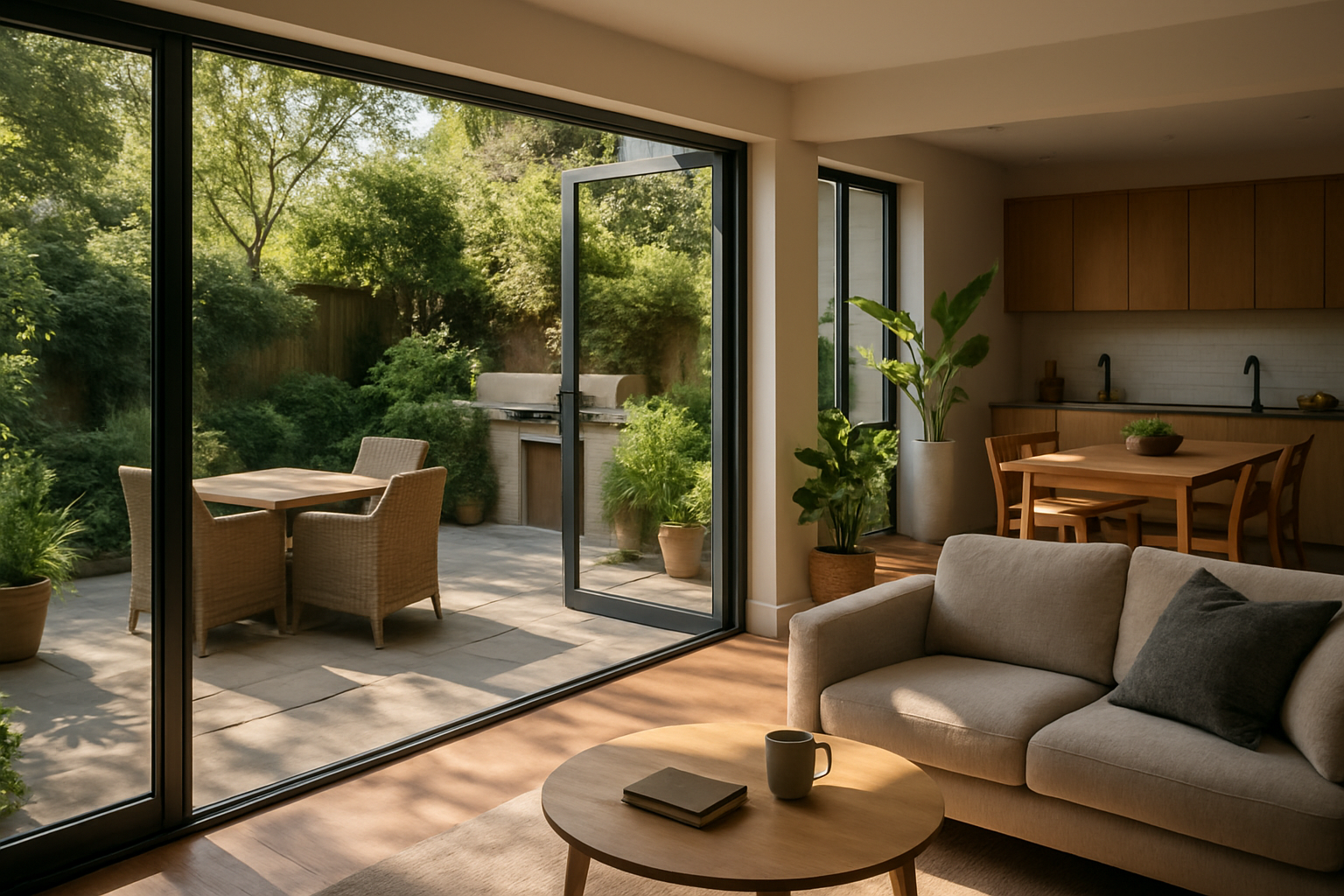"Shifting Spaces: Merging Indoor and Outdoor Living for a Harmonious Home Experience"
Imagine this: a living room that seamlessly extends to a sun-drenched patio, where the boundaries between indoor and outdoor spaces blur, and nature becomes an integral part of your daily life. Welcome to the world of indoor-outdoor living—an emerging trend redefining home designs across the globe.

Indoor-Outdoor Living: A Historical Overview
The concept of indoor-outdoor living isn’t new. Traditional Japanese homes, with their sliding shōji doors and engawa porches, have long embraced the fluidity between interior and exterior spaces. The mid-20th-century modernist architects, including Frank Lloyd Wright and Richard Neutra, also championed open floor plans and large glass windows that invite the outdoors in.
Today’s Indoor-Outdoor Living: The Current State and Trends
In recent years, indoor-outdoor living has gained momentum, driven by homeowners’ desire for spacious, light-filled homes that embrace nature. This trend manifests in numerous ways—large retractable glass doors, outdoor kitchens, indoor gardens, and sunrooms, to name a few.
The rise of multi-functional spaces within homes, especially during the pandemic, has further propelled this trend. Homeowners now seek spaces that can transition from a home office to a serene outdoor retreat in a matter of seconds.
The Practicality of Indoor-Outdoor Living and Its Impact on Daily Life
Indoor-outdoor living isn’t just about aesthetic appeal—it’s about enhancing life quality. Studies show that exposure to natural light and greenery can boost mood, reduce stress, and improve concentration. Furthermore, open spaces promote social interaction and physical activities, contributing to overall well-being.
Market trends reflect this growing demand. In a recent survey by American Institute of Architects, 70% of architects reported an increase in requests for blended indoor-outdoor living spaces.
Making Indoor-Outdoor Living Work: Expert Insights
Successfully merging indoor and outdoor spaces requires thoughtful planning and design. Here are some expert tips:
-
Seamless Transition: Use similar materials, color schemes, and design elements to blur the line between indoors and outdoors.
-
Functional Spaces: Make outdoor spaces functional—outdoor kitchens, fire pits, or weather-resistant furniture can encourage frequent use.
-
Bring Nature In: Indoor plants, green walls, and water features can create a nature-infused indoor ambiance.
-
Controlled Climate: Consider installing retractable roofs, outdoor heaters, or fans to make outdoor spaces usable year-round.
Conclusion
Indoor-outdoor living is more than a trend—it’s a lifestyle choice reflecting our innate desire to connect with nature. By blurring the lines between inside and outside, we can create homes that are not only beautiful but also beneficial to our well-being. As we move forward, it will be exciting to see how this trend evolves and continues to reshape our living spaces.





